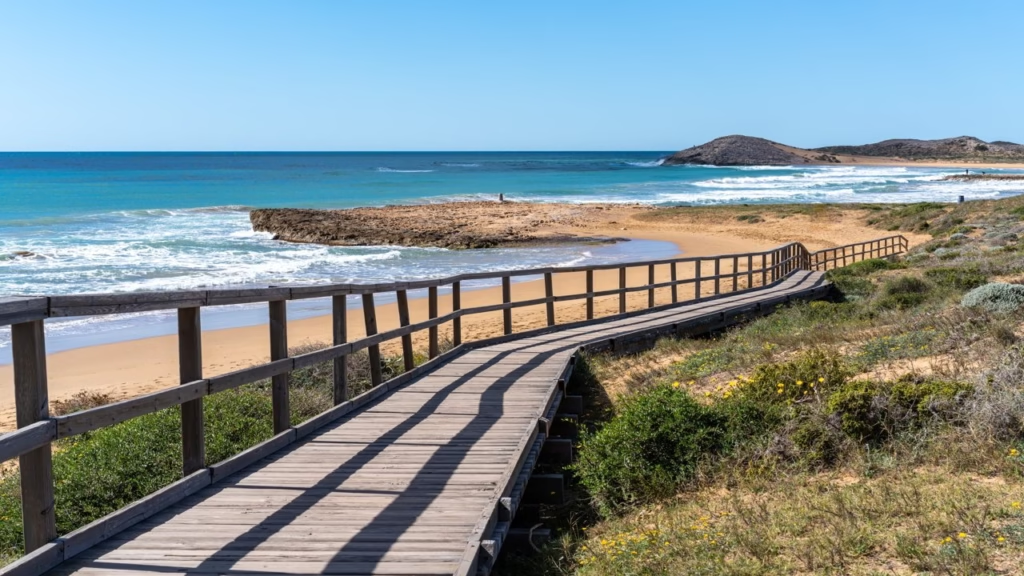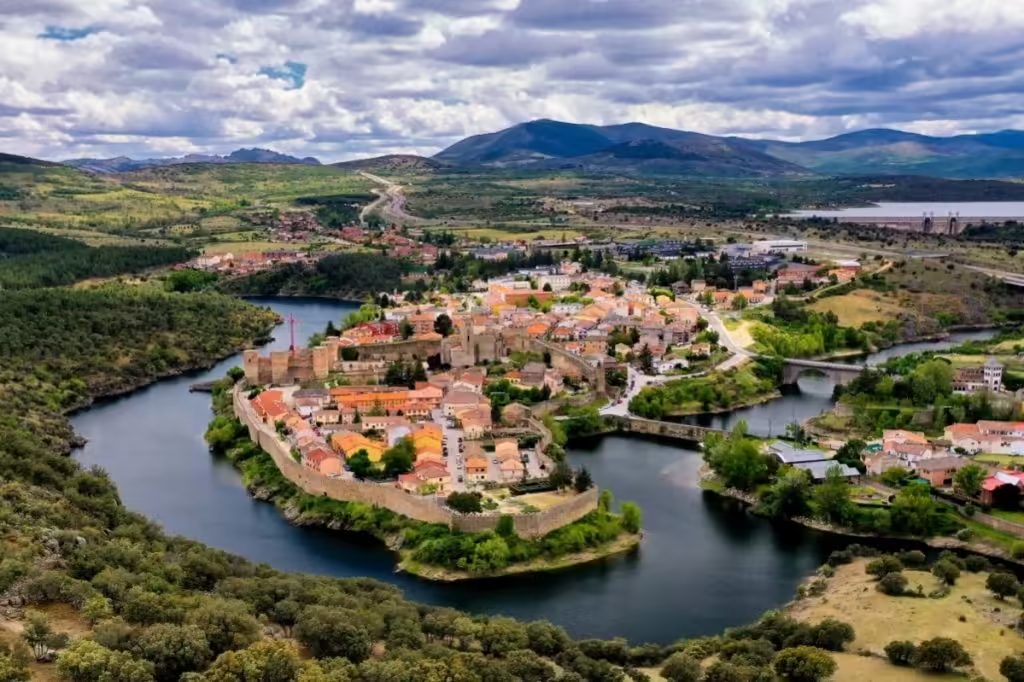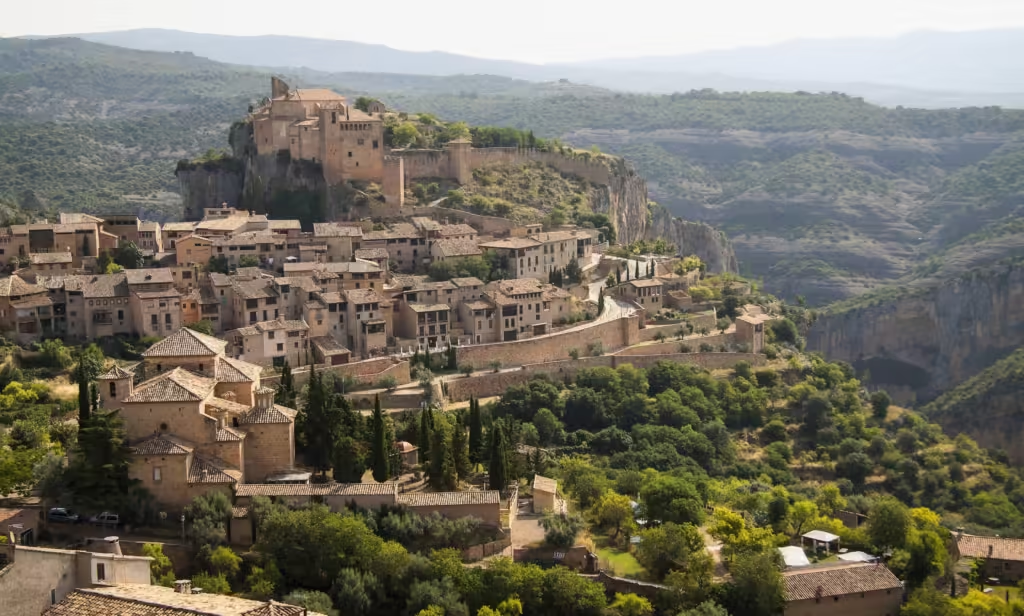Calblanque is a breathtaking natural paradise located in the Region of Murcia, Spain. Officially known as the Parque Regional de Calblanque, Monte de las Cenizas y Peña del Águila, this protected area boasts miles of pristine Mediterranean coastline, rolling dunes, and a diverse range of wildlife. Its unspoiled beaches and panoramic views make it a must-visit destination for nature lovers and adventurers alike. In this comprehensive guide, you will discover the best things to do in Calblanque, how to get there, and essential travel tips for an unforgettable experience.

Where Is Calblanque Located?
Calblanque occupies a prime spot in southeastern Spain. You can find it nestled between Cartagena and La Manga del Mar Menor in the Region of Murcia. Despite its convenient location near popular tourist hubs, Calblanque remains relatively untouched by mass tourism. This quiet sanctuary sits roughly 50 kilometers south of Murcia city. Many visitors opt to stay in nearby resorts, yet they often venture into this reserve for day trips to escape the hustle and bustle.
The park is well-known for its diverse landscapes. You will find golden sand beaches, limestone cliffs, salt flats, and rolling hills covered in aromatic vegetation. This variety makes each turn of the trail a scenic surprise. The Mediterranean Sea forms a gorgeous backdrop, with its turquoise waters contrasting against the rugged shoreline.
Brief History and Natural Heritage
Calblanque has a rich history stretching back centuries. Early inhabitants thrived in this region, taking advantage of the favorable climate and fertile soil. Many remains of ancient settlements have been discovered, hinting at the area’s significance in the past. Over time, coastal erosion and climatic shifts shaped the land into the unique natural wonder we see today.
Ecological Significance
Designated a Regional Park in 1987, Calblanque’s conservation status preserves its invaluable habitats. Visitors will encounter a high level of biodiversity. You may spot various bird species, like flamingos, egrets, and herons, thriving in the salt flats and wetlands. The park’s coastal areas also play host to sand dunes and seagrass meadows, both essential for marine life. These habitats support endangered species such as the Caretta caretta (loggerhead turtle), which periodically uses the beaches for nesting.
Protected Wildlife and Flora
Calblanque is home to numerous protected plant species, including the dwarf palm and the Phoenician juniper. This lush vegetation offers shelter and sustenance to many of the park’s resident animals. Birdwatchers, in particular, enjoy hours of entertainment observing migratory species flocking to these coastal wetlands. Some birds rely on the salt flats as a resting point on their long journeys across continents.
Best Time to Visit Calblanque
The region’s climate is Mediterranean and semi-arid. Summers are warm, with highs often reaching above 30°C, while winters are mild and typically hover around 15°C. Spring and autumn bring comfortable temperatures, making them ideal for hiking and wildlife spotting. However, summer remains the most popular season for beachgoers. If you want to avoid crowds, consider visiting in late spring or early autumn, when sunny days are still abundant but the park feels quieter.
Seasonal Highlights
Spring: Wildflowers bloom across the landscape, creating bursts of color. Migratory birds return to the wetlands, offering prime birdwatching opportunities.
Summer: Warm weather draws beach enthusiasts. The sea is perfect for swimming, snorkeling, and diving in crystal-clear waters.
Autumn: Mild temperatures make outdoor activities comfortable. Fewer tourists allow for more tranquility on the trails.
Winter: A peaceful time for hiking and photography. Temperatures remain moderate, though some facilities may close or have shorter hours.
How to Get to Calblanque
Calblanque’s convenient location makes it accessible by car, bus, or train. Most travelers arrive through the nearby cities of Murcia or Cartagena. Both offer good transportation links and various car rental options.
By Car
If you prefer flexibility, renting a car is your best bet. From Murcia, drive along the A-30 highway toward Cartagena, then follow the signs to La Manga. Look for exit points that indicate “Parque Regional Calblanque.” Parking can be limited near the beaches during the peak season, so be prepared to arrive early or use designated parking areas.
By Bus or Train
If you want to rely on public transport, head to either Murcia or Cartagena’s bus or train stations. From there, local bus routes connect to the coastal towns near Calblanque. You might need to switch to a taxi or a shuttle service for the final stretch into the park. During the high season, some shuttle buses run directly into the reserve to reduce traffic congestion and protect the delicate
Things to Do in Calblanque
Calblanque appeals to a wide variety of interests. Whether you love hiking, birdwatching, or simply sunbathing on unspoiled beaches, you will find plenty to keep you entertained.
Hiking and Trail Exploration
One of the best ways to appreciate Calblanque is by hitting the trails. Several marked routes snake through the park, revealing coastal cliffs, salt flats, and sandy coves. Many of these paths are suitable for all fitness levels. Remember to wear sturdy footwear and pack plenty of water, especially during hot summer months.
El Hondo del Monte: A moderately challenging trail offering panoramic views of the Mediterranean Sea.
Playa Negrete Route: A shorter, family-friendly path that leads to a secluded beach with dark sand.
Monte de las Cenizas: A more advanced trek that climbs to a historical artillery battery.
Beach Activities
Calblanque’s beaches are the main attraction for many visitors. These shores remain mostly undeveloped, so you can experience nature in its purest form. Dunes, rocky coves, and golden sands form a picturesque coastline that’s ideal for sunbathing. Snorkeling is popular in the clear waters, revealing a vibrant marine ecosystem just below the surface.
Playa Larga: A long stretch of sand perfect for a lazy day under the sun.
Playa de las Cañas: Known for its scenic dunes and calm waters, great for families seeking a quieter spot.
Playa Negrete: Less crowded due to its slightly remote location, offering a tranquil setting.
Birdwatching and Wildlife Photography
If you have an interest in wildlife, make sure to bring your binoculars. Calblanque is a known stopover for migratory birds, giving you the chance to spot species like flamingos, stilts, and ospreys. Early mornings or late afternoons often yield the best lighting and most active wildlife.
Picnicking and Relaxation
The peaceful atmosphere of Calblanque sets the stage for a relaxing picnic. Many areas offer natural shade under pine groves or near the edges of salt flats. Pack your favorite foods and beverages, but remember to take your trash with you when you leave. Maintaining the park’s cleanliness ensures the conservation of its unique ecosystem.
Practical Tips and Advice
A trip to Calblanque can be unforgettable if you come prepared. Because this area remains relatively undeveloped, you should plan ahead, especially if you want to spend several hours or a full day.
What to Pack
Sunscreen and Hat: The Mediterranean sun is strong, especially in summer.
Water and Snacks: There are limited facilities within the park.
Comfortable Footwear: Trails can be rocky, and beaches may require walking on uneven sand.
Binoculars: Ideal for birdwatching and spotting distant wildlife.
Camera: The park’s scenery offers endless photography opportunities.
Park Regulations
Calblanque’s protected status means certain rules apply to preserve its biodiversity. Always stick to marked paths and avoid disturbing wildlife. Some parking restrictions exist during the high season to reduce environmental impact. Dogs may be allowed in certain areas, but it’s best to check specific guidelines. Open fires and camping are prohibited without explicit permission, so plan your activities accordingly.
Accessibility
Much of Calblanque is rugged, which can pose challenges for visitors with mobility issues. However, some beaches and lookout points are more accessible than others. You can inquire at local tourism offices or check online resources for information on accessible routes and services.
Dining and Accommodation Options
Calblanque itself has limited dining and lodging options due to its protected status. Most visitors choose to stay in nearby towns like Cartagena, Cabo de Palos, or La Manga del Mar Menor. These areas provide a wide range of hotels, apartments, and guesthouses.
Restaurants and Local Cuisine
Murcia’s cuisine features fresh seafood, vegetables, and rice dishes like caldero (a local paella variation). If you stay in one of the adjacent towns, you can indulge in tapas bars or traditional Spanish restaurants. Sample local specialties, such as salted fish (mojama) or zarangollo (scrambled eggs with zucchini and onions). Many eateries source ingredients locally, adding a fresh and authentic touch to their menus.
Nearby Attractions
Cartagena: Known for its Roman theatre and naval history.
Cabo de Palos: Famous for its lighthouse and bustling Sunday market.
Mar Menor: Europe’s largest saltwater lagoon, ideal for water sports.
These spots are easily reached by car or public transport, making them great additions to your itinerary.
Frequently Asked Questions
1. Is there an entrance fee to Calblanque?
Calblanque is a protected area, but entry is usually free. During the high season, some parking fees or shuttle bus fares may apply to control visitor numbers and safeguard the environment.
2. Can I swim at the beaches in Calblanque?
Yes, swimming is allowed on most beaches. The waters are generally safe and clear. However, keep an eye on any posted flags or warnings regarding strong currents or restricted areas.
3. Are there guided tours available in Calblanque?
Yes, several local companies offer guided hikes, birdwatching excursions, and even photography tours. Guided tours can enhance your experience by providing in-depth knowledge about the park’s habitats and history.
4. How can I reach Calblanque if I don’t want to drive?
You can take a bus or train to Cartagena or La Manga del Mar Menor. From there, catch a local bus or a taxi to the park. In peak season, special shuttle buses might run directly into Calblanque. Always verify current schedules online before traveling.
5. Are there any accommodations inside the park?
No. Calblanque is a protected space with limited infrastructure. You will find a broader range of hotels and vacation rentals in Cartagena, Cabo de Palos, and La Manga del Mar Menor. Staying outside the park and making a day trip is a convenient option.
6. What wildlife is common in Calblanque?
You may spot flamingos, herons, and other migratory birds, especially around the wetlands and salt flats. Reptiles like the ocellated lizard and various species of amphibians also thrive here. With a bit of luck, you might even glimpse dolphins offshore or loggerhead turtles nesting along the beaches.
H3: 7. Do I need a permit for photography or filming?
Basic photography for personal use does not require a permit. For commercial filming or professional photography, you may need special authorization from park authorities. Check official park guidelines to ensure compliance.
Conclusion
Calblanque is a gem on Spain’s southeastern coast. It offers a blend of pristine beaches, lush habitats, and fascinating wildlife. Whether you are a keen photographer, an avid hiker, or someone seeking a quiet coastal getaway, this protected regional park will exceed your expectations. Its location near popular destinations like La Manga del Mar Menor and Cartagena makes it a convenient day trip or a longer retreat for immersing yourself in nature.
Plan ahead by checking local regulations, especially regarding vehicle access in the high season. Respect the environment, adhere to park rules, and leave no trace behind. Calblanque’s tranquility, unspoiled scenery, and ecological importance make it a standout spot in Murcia. Your visit will not only rejuvenate you, but also deepen your appreciation for Spain’s diverse landscapes and commitment to conservation. Prepare to explore Calblanque, and experience firsthand the unmatched beauty of one of the most stunning natural parks in the Mediterranean region.

